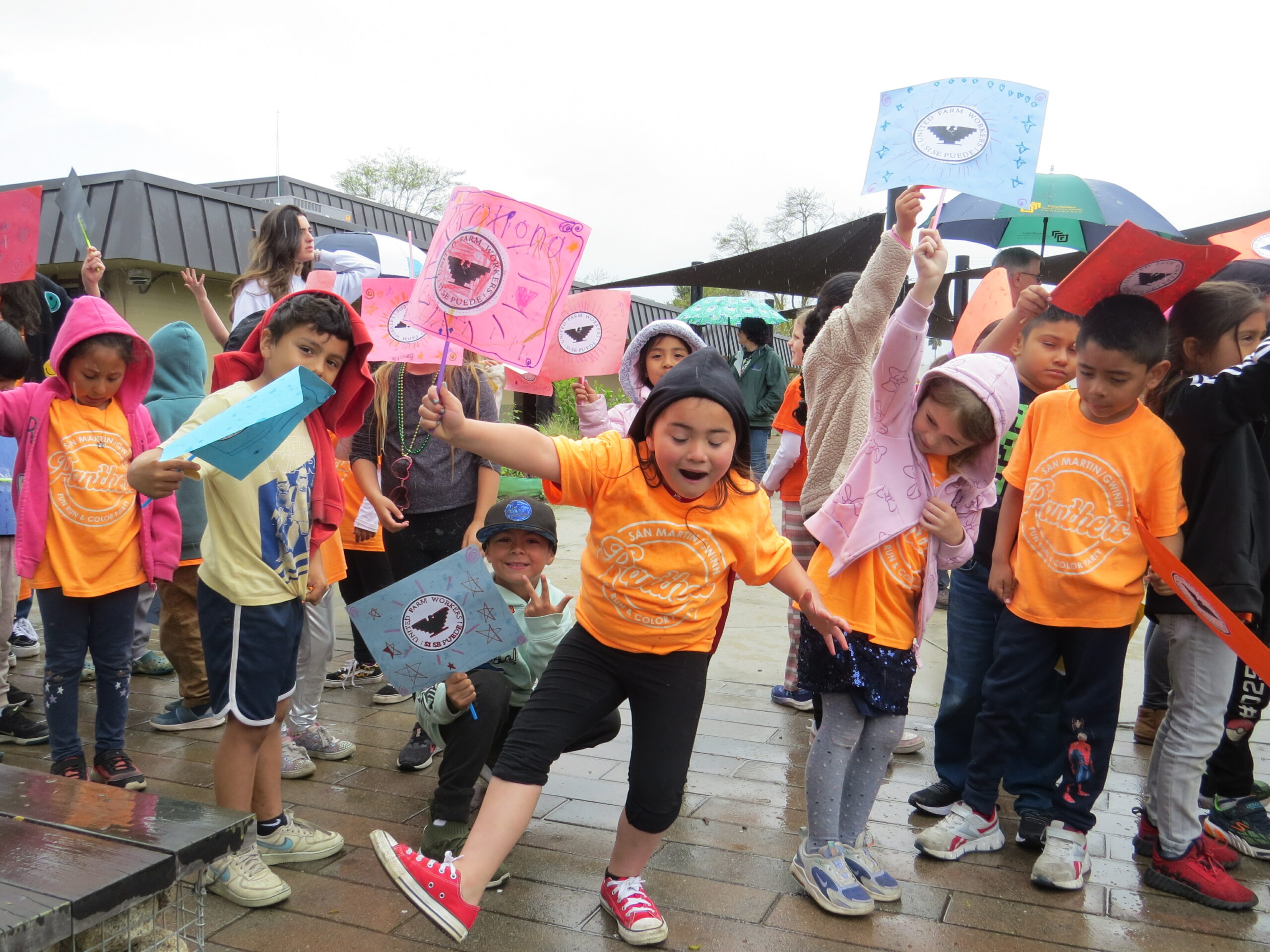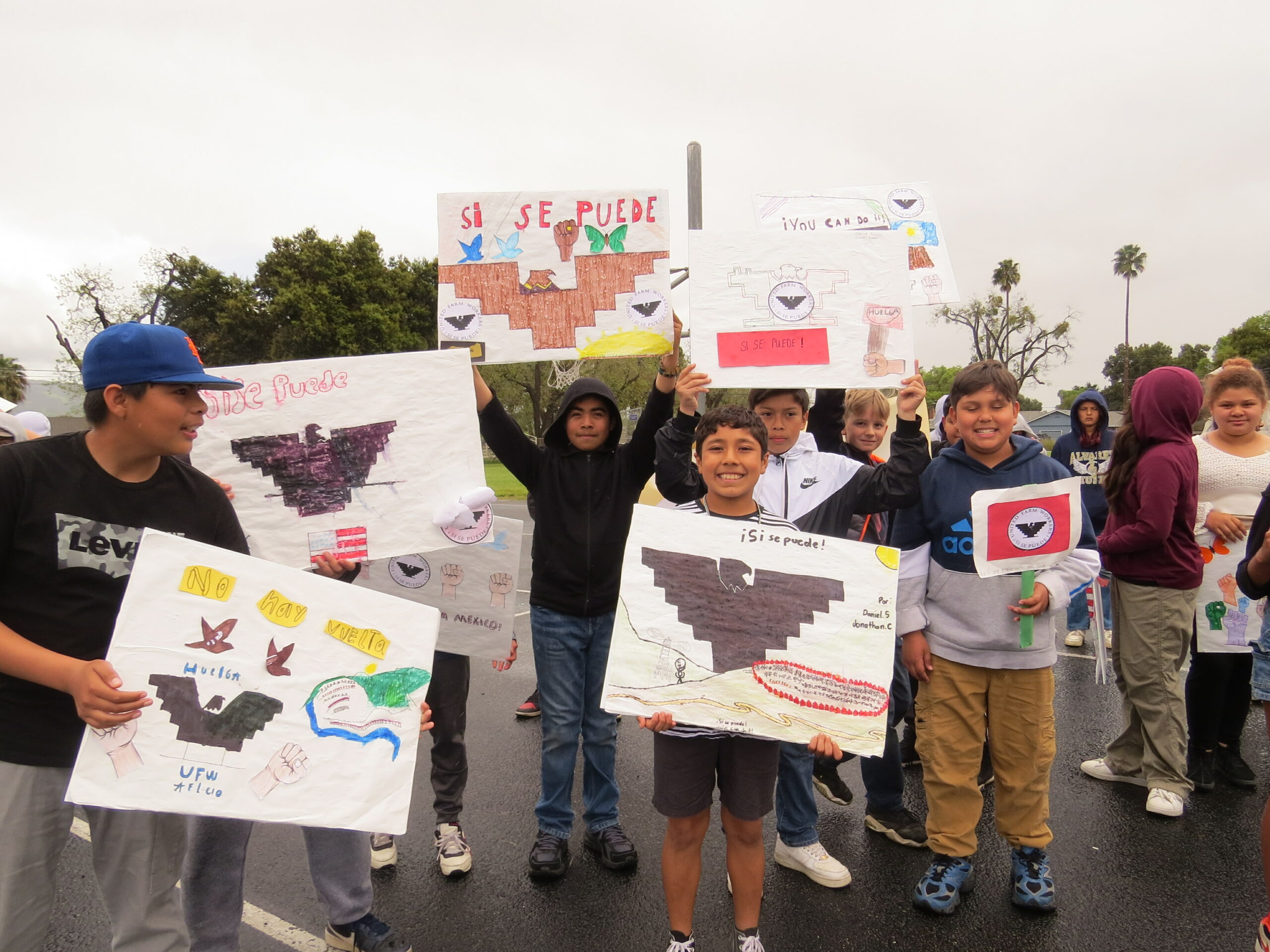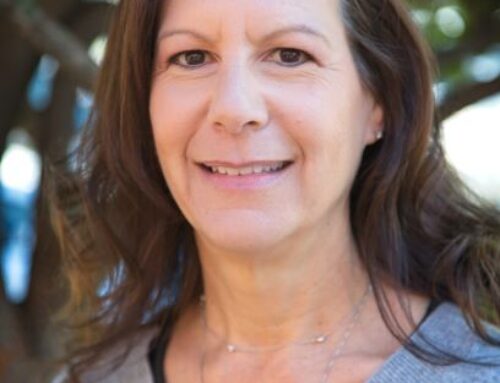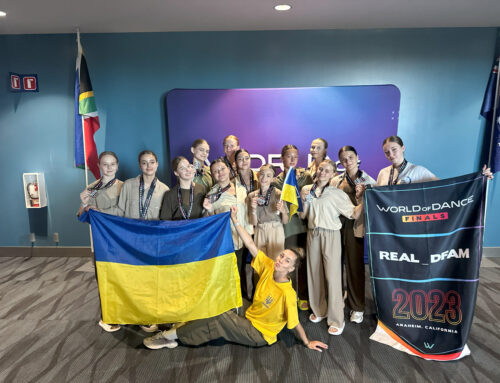About 700 students from K-8 gathered and walked in a line around the campus.
![]()

Photo by Marty Cheek Students at San Martin/Gwinn Environmental Science Academy march in honor of farm workers during Sí Se Puede Week.
By Cesar Gamboa

Cesar Gamboa
The inclement weather didn’t dampen the spirits of the students and staff at San Martín/Gwinn Environmental Science Academy on March 28. That rainy afternoon, they commemorated the impact of the historical United Farm Workers movement and highlighted Mexican-American culture while promoting a positive portrayal of the broader Latino community.
About 700 students from K-8 gathered and walked in a line around the campus. They held banners and waved UFW flags while gleefully chanting “Sí se puede” (Yes, it can be done). The pounding of a drum and the cheers served as the crescendo of a series of learning activities done during the week, including working in the school’s community garden and persuasive writing workshops.
As the overcast sky threatened the potential for rain, the sentiment in the crowd outshone and prevailed over the weather, much like the movement they commemorated. This analogy went beyond the event they observed — the movement started in the 1960s led by labor union leaders Cesar Chavez and Dolores Huerta. The school’s event served as a testament to their dedication to challenging adversity and recognizing the contributions of all. In this case, students marched to celebrate the farmworkers who grow the fruits and vegetables we enjoy and that nourish us.

By Marty Cheek
Each class brought together culture, civic engagement, language, and education. Each distinguished a unique cohort, demonstrating their works and projects. The school coined March 25-29 “Sí Se Puede Week.” It intends to expand the event in its depth, scope, and potential.
Jose Anaya prompted the school’s tradition in 2019. The kindergarten teacher’s attentiveness to his students’ education is outstanding. In Spanish, the term bien educado (well-educated) encompasses both academics and good character. That’s precisely the essence of both the new school tradition and San Martín/Gwinn as a whole.
“It’s organized chaos,” Anaya said joyfully as he led students through the halls, and oriented them towards forming a ring in the playground. Speakers reminded the students of the fundamental values for the UFW movement: dignity and respect.

By Marty Cheek
The event at San Martín/Gwinn allowed students to become acquainted with the importance of civic engagement and non-violence. That was noted by the banners depicting the silhouetted eagle. Its lack of talons demonstrates the peaceful conviction of the United Farm Workers of America. Their movement suggested a better way of cooperation to protect laborers’ rights, instead of leaving them treated as readily discardable employees. Meanwhile, the school assembly promoted culture by featuring written works, testimonies, poetry, and Folklorico (a type of dance, music, and attire which highlights the nuances of Mexican cultures).
The week’s various activities and culminating student march are attributed to the commitment of the Home and School Club, which extended to me an invitation to observe the commemoration.
 Sí Se Puede Week demonstrates the potential for culturally relevant education and enrichment that’s meaningful and local. It enables students to recognize positive ethnic and social identities. The tribute prepares the young people for an ever more globalizing world. It affirms identity and helps students understand the diversity of interconnectedness.
Sí Se Puede Week demonstrates the potential for culturally relevant education and enrichment that’s meaningful and local. It enables students to recognize positive ethnic and social identities. The tribute prepares the young people for an ever more globalizing world. It affirms identity and helps students understand the diversity of interconnectedness.
Twenty years ago, a celebration of farm workers like the one that took place at San Martín/Gwinn would have been difficult to imagine. However, today, society has developed a greater capacity to recognize and appreciate nuance and history. This suggests people are now more willing to engage with complex and potentially contentious issues. The community has also developed a new potential for cultural understanding. This implies a growing appreciation for the diverse and multifaceted nature of American culture. American identity is not a singular, monolithic concept but rather the result of contributions from many different communities and generations.
San Martín/Gwinn’s students and staff display a positive step forward in strengthening both the American identity as well as the identity of the South Valley. By engaging with and understanding the complexities of history and culture, communities can forge a stronger sense of an inclusive identity.
Cesar Gamboa is a local educator, an FM DJ and a linguist for the Gilroy Unified School District.






